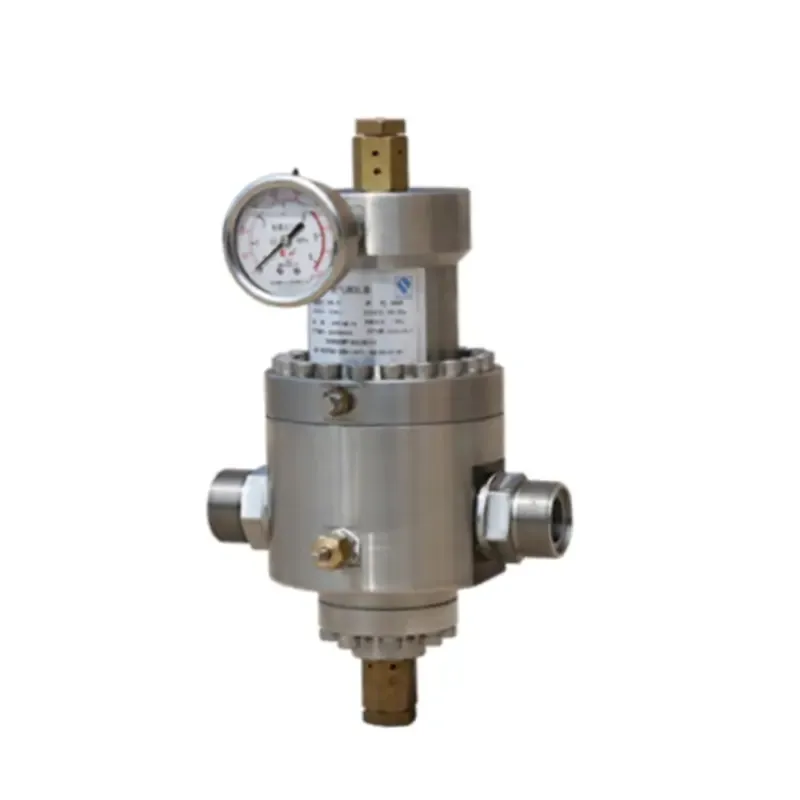
Dec . 02, 2024 02:14
Back to list
pneumatic valve
Understanding Pneumatic Valves An Essential Component in Fluid Control Systems
Pneumatic valves play a critical role in the control and regulation of air or gas within various industrial applications. As essential components of pneumatic systems, these valves are responsible for directing the flow of compressed air, which is crucial for the operation of various machinery and equipment. Understanding the different types and functions of pneumatic valves can significantly enhance the efficiency of operations in manufacturing, automation, and other sectors that rely on pneumatic technology.
What Are Pneumatic Valves?
At its core, a pneumatic valve is a device that opens, closes, or partially obstructs the flow of air or gas in a pneumatic system. These valves operate based on changes in pressure or electrical signals and can control the speed, direction, and pressure of the air or gas flowing through the system. The primary objective of pneumatic valves is to ensure optimal performance of pneumatic systems, making them vital in applications ranging from factories and warehouses to agricultural equipment and automotive systems.
Types of Pneumatic Valves
There are several different types of pneumatic valves, each with its own unique functionality
. The most common types include1. Directional Control Valves These valves manage the direction of airflow within a system. They open or close to direct air to specific components, ensuring that they operate correctly. Directional control valves can be manually operated, electrically controlled, or controlled by pilot pressure.
2. Pressure Control Valves These valves maintain the pressure within a pneumatic system. They can act as regulators, relief valves, or check valves. Pressure control valves protect the system from overpressure conditions, thereby preventing potential damage to equipment and ensuring safety.
3. Flow Control Valves These are used to control the speed of actuators by regulating the flow rate of air. By adjusting the flow, pneumatic systems can achieve precise movements and reduce energy consumption. Flow control valves can be either adjustable or preset.
pneumatic valve

4. Shuttle Valves Shuttle valves allow air to flow between two different sources while preventing backflow. They are often used in applications that require redundancy to ensure continuous operation, such as in emergency systems.
Applications of Pneumatic Valves
The versatility of pneumatic valves enables them to be employed in a multitude of applications. In manufacturing, they are commonly used in assembly lines for controlling robotic arms and conveyor belts. In the automotive industry, pneumatic valves play a vital role in powering tools and organizing production processes. Additionally, in packaging and material handling, these valves help in managing the flow of materials efficiently.
Advantages of Pneumatic Valves
One of the primary advantages of pneumatic valves is their speed and efficiency in operating pneumatic actuation systems. Unlike electrical systems, which can be slower due to electrical resistance, pneumatic systems provide rapid response times. Pneumatic valves also tend to have a higher power-to-weight ratio, making them ideal for applications where space is limited.
Another benefit is their reliability and safety. Pneumatic systems, including valves, are less prone to failure than electrical systems under harsh conditions. Furthermore, if a leak occurs in a pneumatic system, it typically presents a lesser risk than an electrical failure, which can lead to fires or explosions.
Conclusion
In conclusion, pneumatic valves are indispensable components in modern automation and manufacturing processes. Their ability to control and regulate airflow efficiently makes them vital for the optimal performance of pneumatic systems. Understanding the different types and applications of pneumatic valves can significantly improve system efficiency and reliability. As technology progresses, innovations in valve design and functionality continue to enhance the capabilities of pneumatic systems, paving the way for smarter and more efficient industrial processes.
Latest news
-
Safety Valve Spring-Loaded Design Overpressure ProtectionNewsJul.25,2025
-
Precision Voltage Regulator AC5 Accuracy Grade PerformanceNewsJul.25,2025
-
Natural Gas Pressure Regulating Skid Industrial Pipeline ApplicationsNewsJul.25,2025
-
Natural Gas Filter Stainless Steel Mesh Element DesignNewsJul.25,2025
-
Gas Pressure Regulator Valve Direct-Acting Spring-Loaded DesignNewsJul.25,2025
-
Decompression Equipment Multi-Stage Heat Exchange System DesignNewsJul.25,2025

